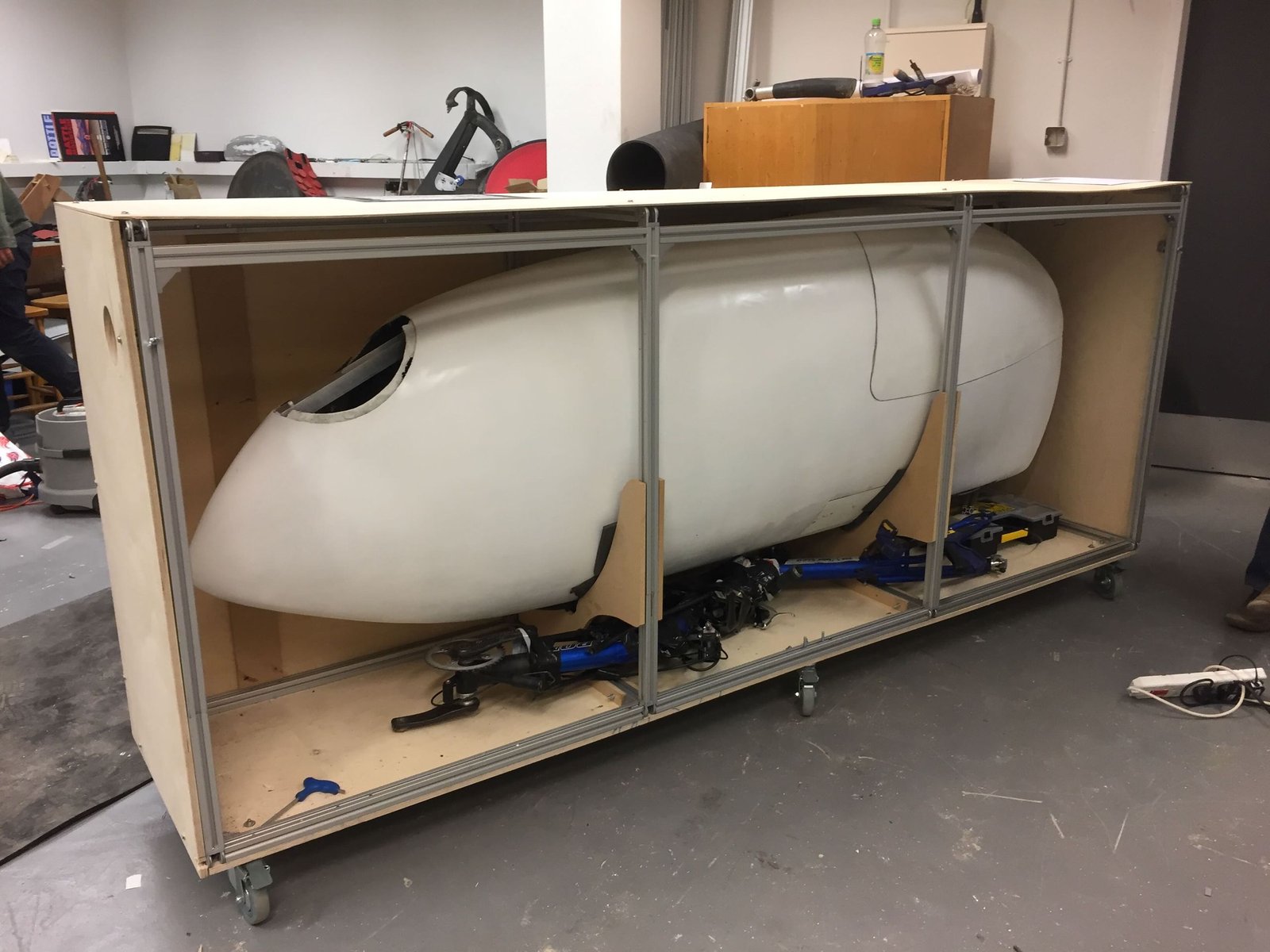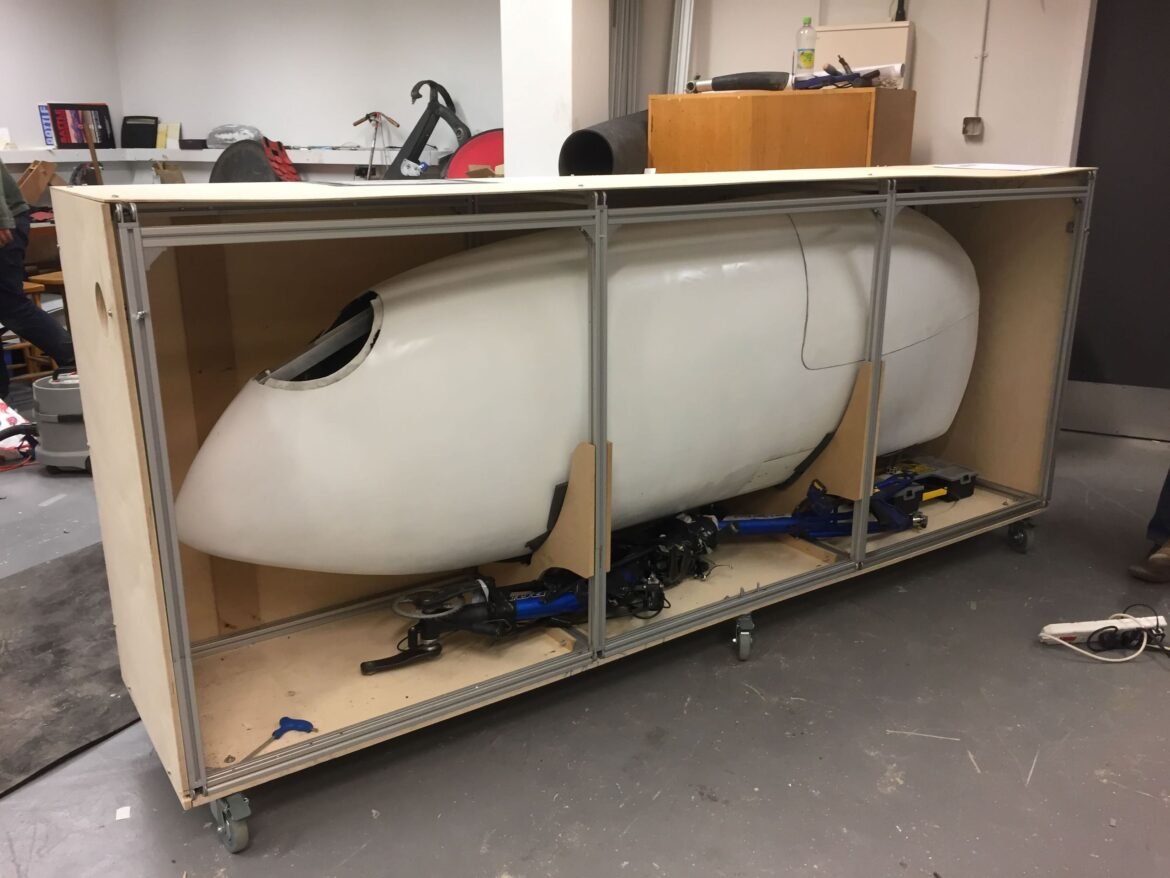
Every year a group of engineering students take a bike to Battle Mountain. The 200-metre stretch of road in the Nevada desert is the site of the World Human Powered Speed Competition – the perfect place to test the top-speeds of a low-gravity recumbent bike over a four-mile acceleration zone. For the London South Bank University (LSBU) students, it’s also the culmination of a year’s worth of research, experimentation and – in some cases – physical training.
The goal at Battle Mountain is simple: try to break the 89.59mph record set by Todd Reichert in 2016. Except it’s not actually that simple. Hurtling along that stretch of Nevada road at 50 – 80 miles per hour in an egg-shaped aerodynamic shell, the rider only has a tv screen through which to see the road ahead – even the smallest wobble can be hard to rectify, sending the bike hurtling sideways through the desert.
This was the challenge of the LSBU students, lead by Senior Professor Barney Townsend, as they set out on another attempt to Nevada’s deserts on the hunt for “glory, a hat and bragging rights.”
“The timeline really started probably 40 odd years ago, when Glenn Thompson, my colleague, and Mike Burrows, were first racing against each other in the recumbent scene,” Townsend says of the lead-up to the Nevada race, “they always had this kind of friendly rivalry.”
The late Mike Burrows is famous within the world of bicycle engineering and aerodynamics. He’d grown up building model airplanes and racing cars, before competing in time trials. In the early 90s, Burrows designed Chris Boardman’s Olympic-medal-winning bike with Lotus, only for it to be banned by the UCI in 1996 for its single-shell aerodynamic design. In a new film following LSBU’s attempt, ‘The Fastest Bicycle’, Burrows wears a luminous green top that reads: “Illegal drugs? 1% faster. Illegal bikes? 100% faster” his face framed by a head of long, grey hair.
But it wasn’t until the mid-2010s that the university’s Glen Thompson and Burrows decided to work on a project together: “They agreed that Glenn would do the aerodynamics and Mike would do the chassis of that first bike. So that became the Soup Dragon.”
The Soup Dragon’s fiberglass chassis was wider on the top, with a narrow, pointed underside designed to minimise contact with the ground. It had a single-speed drivetrain, with a front-wheel-drive system – and it was designed to be the fastest bike in Britain.
“And 2018 was the year that we kind of all came together and it was ready to go to Nevada.”
That first trip was, in Townsend’s words, “disastrous”. The bike was lost in transit, then badly damaged during training. The team returned home dejected, but determined to do better, and so the team grew, incorporating new technicians and transitioning into the student extracurricular project it is today.
“There’s only so much you can fit into an undergraduate curriculum. We’ve had chemical engineers who come and say: ‘Oh, I just do equations all day about the flow of chemicals through pipes. I want to get my hands dirty and make something and learn how carbon fibre works and so on.’
“There’s the sort of big opportunity for students to work with students from other disciplines, learn about what they know about, work on something they can see a tangible, impactful output in the real world as a result, which you often don’t get from undergraduate coursework projects.”
The project took on another goal: to be designed by students, built by students and ridden by students.
With no UCI rules restricting what the team could – or could not – build, the bike began to morph into something new. “In the first year, we rebuilt the steering unit and made it a lot more robust. We rebuilt the shell significantly. It was [originally] a single skin fibreglass shell, and we rebuilt the chassis as a double skin sandwich, constructed of carbon and carbon kevlar, with a kind of embedded keel base rail in it.
“All the different components – the steering unit, the transmission unit, the seat, the rear wheel – would bolt straight onto that, so all the parts would come out of it independently, rather than as one frame.”
(Image credit: London South Bank University)
Having a shell that could be taken off helped in practice too. And practice was important – despite the team only having a maximum distance of 4-5 miles to test the bike on at home in the UK. The rider taking the wheel would have to contend with a variety of factors, including Battle Mountain’s high altitude (1,378 metres), which increases aerodynamism, but impedes the rider’s intake of oxygen.
When it comes to steering an aerodynamic egg down a Nevada strait at eye-watering speeds, the ability to stay on-course is also paramount – and if you don’t correct quick enough, you could quickly be careening sideways off the track.
“What you really need [as a rider] is commitment, because riding a recumbent is not the same as riding an upright. There’s obviously a crossover, but it’s a different set of muscle groups. It takes a bit of relearning to get the balance. So there’s quite a big time commitment to really dial into that, spending weekends getting out and practising and that sort of thing.”
The Covid pandemic drew a temporary pause in development, but the team returned to Nevada in 2022 to race again.
“We got to sixty miles an hour. There’s our top speed there, and that’s where the film kind of closes.” “I hope this isn’t the end of our journey,” Townsend says as he drives into the sunset at the end of, ‘The Fastest Bicycle’. “We’ll keep working on it until we can come back and hopefully break records.”

Click here to see where ‘The Fastest Bicycle’ is screening, and to find out more. The team are also looking out for sponsors to help 2026’s cohort get out to Nevada.

